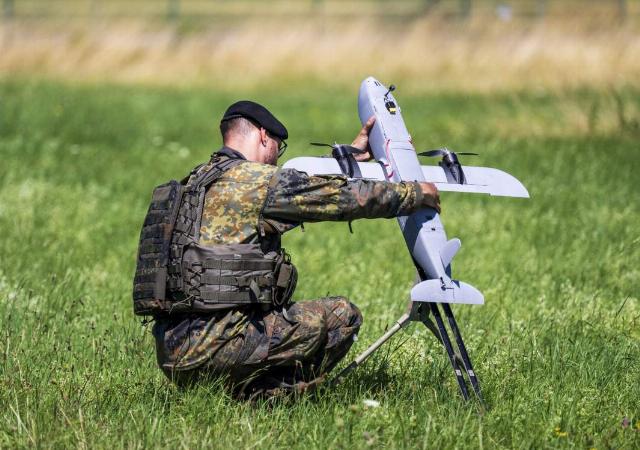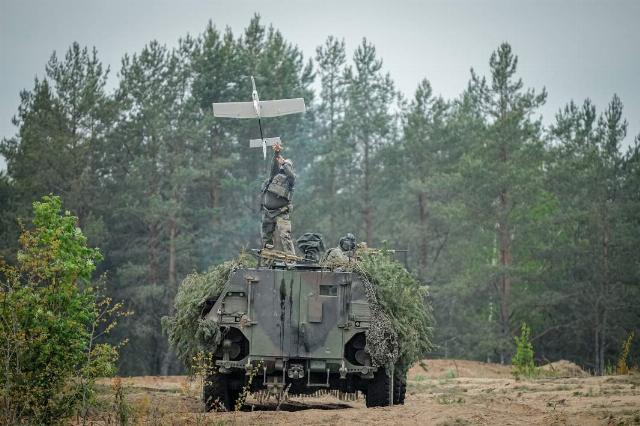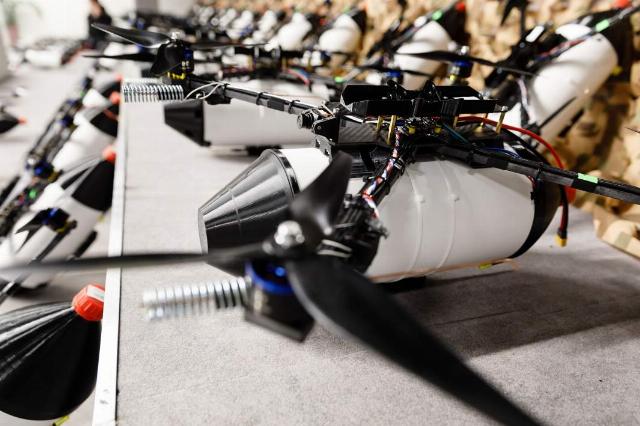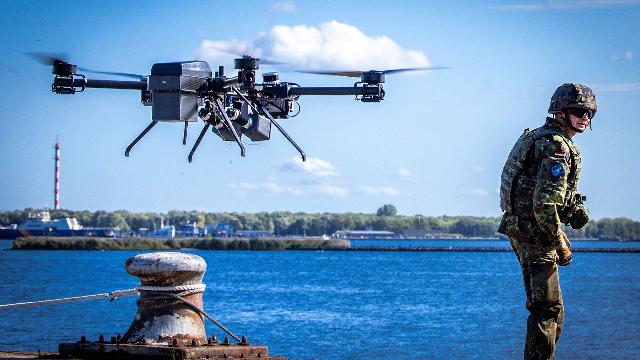And are the NATO countries capable of implementing this ambitious defense project?
An initiative called the "drone wall" is being actively discussed in the European part of NATO, which is planned to be implemented on the eastern borders of the bloc. Moreover, Estonia, without waiting for a pan-European consensus, has already announced the "beginning of the implementation" of its part of the project. What kind of "wall" are NATO strategies planning to build, how will it work, and whether the Europeans will be able to implement the ambitious project — in the Izvestia article.
Waiting for drones
The first proposal to create a unified system for tracking activity in the air on the borders of NATO was put forward by the Baltic states back in the spring of 2024. And it was immediately rejected by the financiers of the European community. But after the discovery of unidentified drones over Poland in September 2025, the idea of creating a pan-European "drone wall" was recalled again and, quite expectedly, raised on the shield.
According to reports from Europe, this project involves the creation of a layered system for detecting and intercepting any unmanned aerial vehicles: drones, cruise missiles, quadrocopters and others.

Photo: Global Look Press/Peter Kneffel
Image source: iz.ru
According to the authors, the "wall" should appear on the eastern flank of NATO from the Baltic to the Black Seas and pass through the territory of the Baltic states, Finland, Poland, Slovakia and Romania. The main shareholders of the project are the Baltic states, Poland and Finland — they are the ones who most often declare their potential vulnerability to the mythical Russian invasion, which, according to the initiators of the project, will begin with a drone attack.
The European Commission, led by Ursula von der Leyen, became the driving force behind the idea. According to her, the project should be implemented on the continent in cooperation between NATO and Ukraine. Including, of course, using the Ukrainian experience in combating drones.
Hungary is against
Politico writes that while the idea is not questioned in the Baltic States and Poland, countries further away from Russia are asking questions about the feasibility of the project.

Hungarian Parliament Building
Image source: Photo: Global Look Press/Justus de Cuveland
For example, Hungary has categorically stated its refusal to participate in the project and, in principle, has no plans to spend money and resources on it. German Chancellor Friedrich Merz also strongly opposed the idea of financing a "drone wall" from European funds. Italy and France were wary of the project.
In general, I wonder how Europe plans to create something by joint efforts with such different positions of the EU member states?
Three elements
So, what will the notorious "drone wall" consist of? Apparently, it should include three main components: detection tools, information processing centers and means of destroying drones. In principle, this is logical — the modern Polish air defense system, for example, has shown complete failure in the face of slow-moving and small-sized UAV-type targets. Consequently, the borders of most countries, as it turned out, are transparent for such an invasion. This means that we need to strengthen the radar field and create detection systems that are based on other principles, such as acoustic detection of low—speed moped drone engines. In addition to detection, it will also require the creation of notification systems that allow information to be conveyed to information processing centers and target designation.
This is the second component — information collection and processing centers. In principle, such systems differ little from air defense command posts, but probably no one has previously created extended continuous air defense systems in the participating countries.

Photo: Global Look Press/Kay Nietfeld
Image source: iz.ru
Now the initiators of the project will have to create and integrate such centers with new detection systems for mopeds, quadrocopters and other devices. Technically, the task is feasible, but it will require both political will and considerable funding.
But with the third component — actually, the destruction or suppression of drones — everything is very difficult. The fight against drones is one of the most urgent tasks for the military of all countries today. The problem here is that the means of destroying UAVs, which are available to modern armed forces, are often ten times more expensive than the drones themselves. In addition, there is also the issue of aiming modern weapons systems at a small and slow—moving vehicle - missiles can simply miss at high speed, and radar fuses may not work when they miss due to the small size of the target.
You can, of course, chase drones and helicopters, but then you need to deploy special units with a large number of rotorcraft along the borders, and this is not part of the plans of the armed forces of NATO countries. Therefore, development work is underway to find universal destruction systems for the destruction of drones - small and inexpensive missiles, shotguns, electromagnetic systems, laser systems, etc.
The Wall Breakers
How effective such a system will be and whether it will be able to solve the task of protecting Europe from a possible drone attack is a big question. If we assume the participation of modern armed forces in breaking through the "wall", then both electronic warfare systems and various means of fire destruction will work. Including those against which no "wall of drones" will help. For example, ballistic missiles. Moreover, the strikes will be carried out on the nodal command centers, after which the entire "wall" is expected to collapse. But until then, there is almost unlimited scope in the work on creating a "wall" for the Western military-industrial complex (MIC).
This seems to be the main interest. It is not surprising that the military-industrial complex concerns reacted to the program with great enthusiasm. And, of course, we are ready to take an active part in it.

Photo: Global Look Press/Mykhaylo Palinchak
Image source: iz.ru
Individual "front-runners" have already started work. Estonia, for example, plans to deploy its part of the system by the end of 2027, and plans to put the first complexes for detecting and combating drones into operation next year, as promised by the country's Prime Minister Kristen Michal.
Of course, the "drone wall" harmoniously fits into the modern concept of pan—European defense - protection from the "Russian threat" cultivated in the West and control of the eastern borders, support for Ukraine as an advanced outpost, the renewal of air defense and the creation of space forces.
And if someone in the EU does not like the idea of a "wall", then reports of some drones may come from Germany, France, Denmark and other countries, and the "dissenters" will happily join the new pan-European project. It's not for nothing that unidentified drones appear so regularly in the skies over Europe.
Dmitry Kornev

